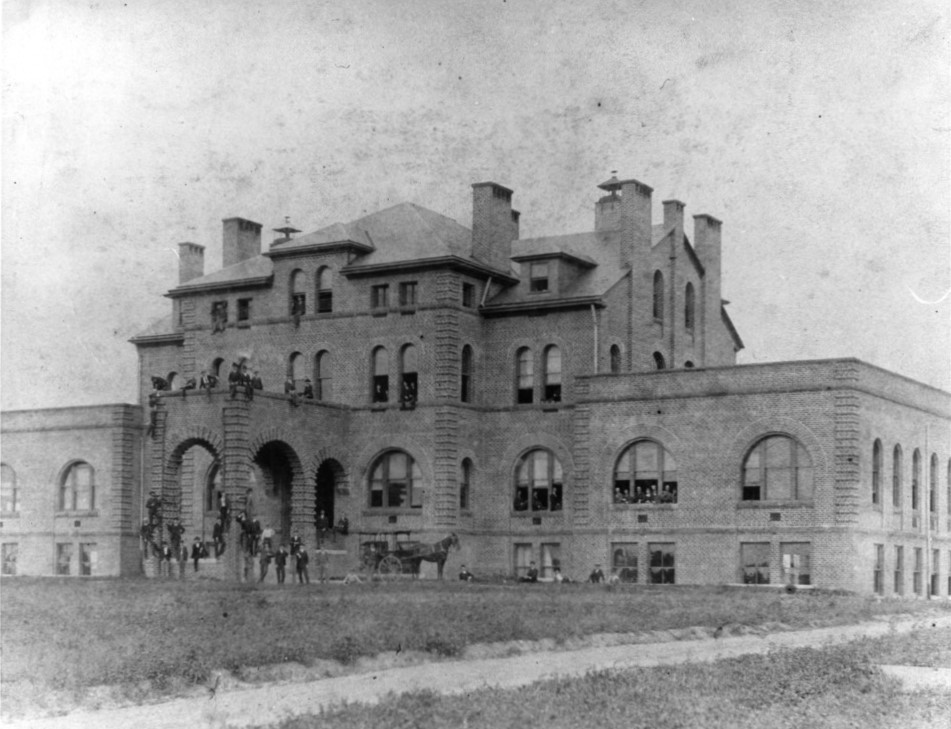
Alexander Q. Holladay, faculty, and the first freshman class in front of Main Building (later Holladay Hall), 1890

Alexander Q. Holladay, faculty, and the first freshman class in front of Main Building (later Holladay Hall), 1890
This blog post was contributed by Sydney Alston and Katie Bushman, Special Collections Graduate Desk Assistants, and edited by Taylor Wolford.
NC State University Libraries’ Special Collections Research Center is pleased to announce that the digitized records of the first seven chancellors of NC State are now available online. The Early Chancellors Records (1891-1934), the John William Harrelson Records (1933-1953), and the Carey Hoyt Bostian Records (1954-1959) each contain a variety of historical materials including correspondence, photographs, financial records, reports, and more.
Please note that some historical materials may contain harmful content and/or descriptions. Learn how we’re addressing it.
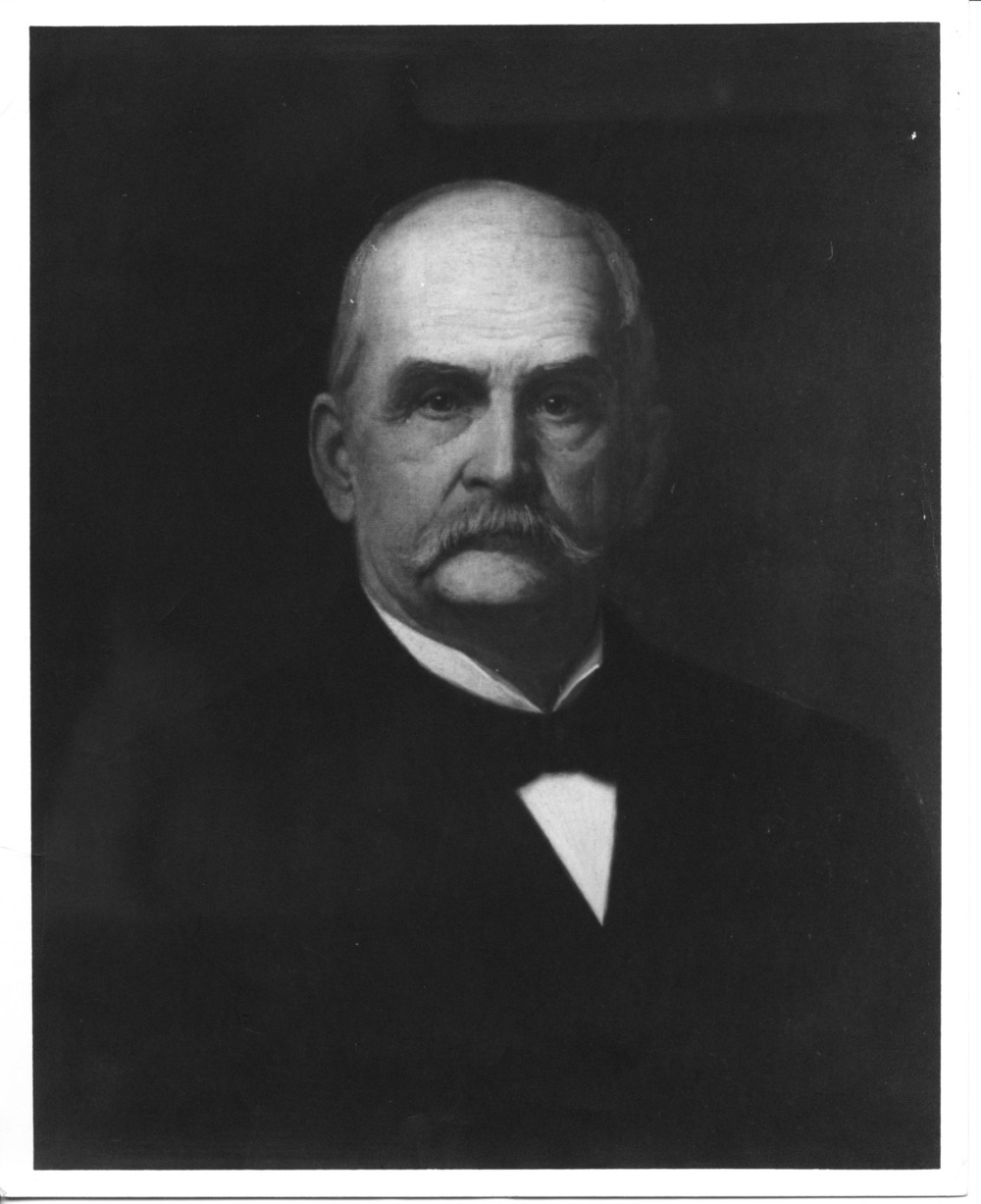
Alexander Holladay, a former Confederate colonel and Virginia state senator, was the first president (now known as chancellor) of the North Carolina College of Agriculture and Mechanic Arts. When the college opened in 1889, it consisted of a single building (what is now Holladay Hall) and boasted six faculty members and 72 students. By Holladay’s retirement in 1899, enrollment reached 300 students and the campus had begun to expand.
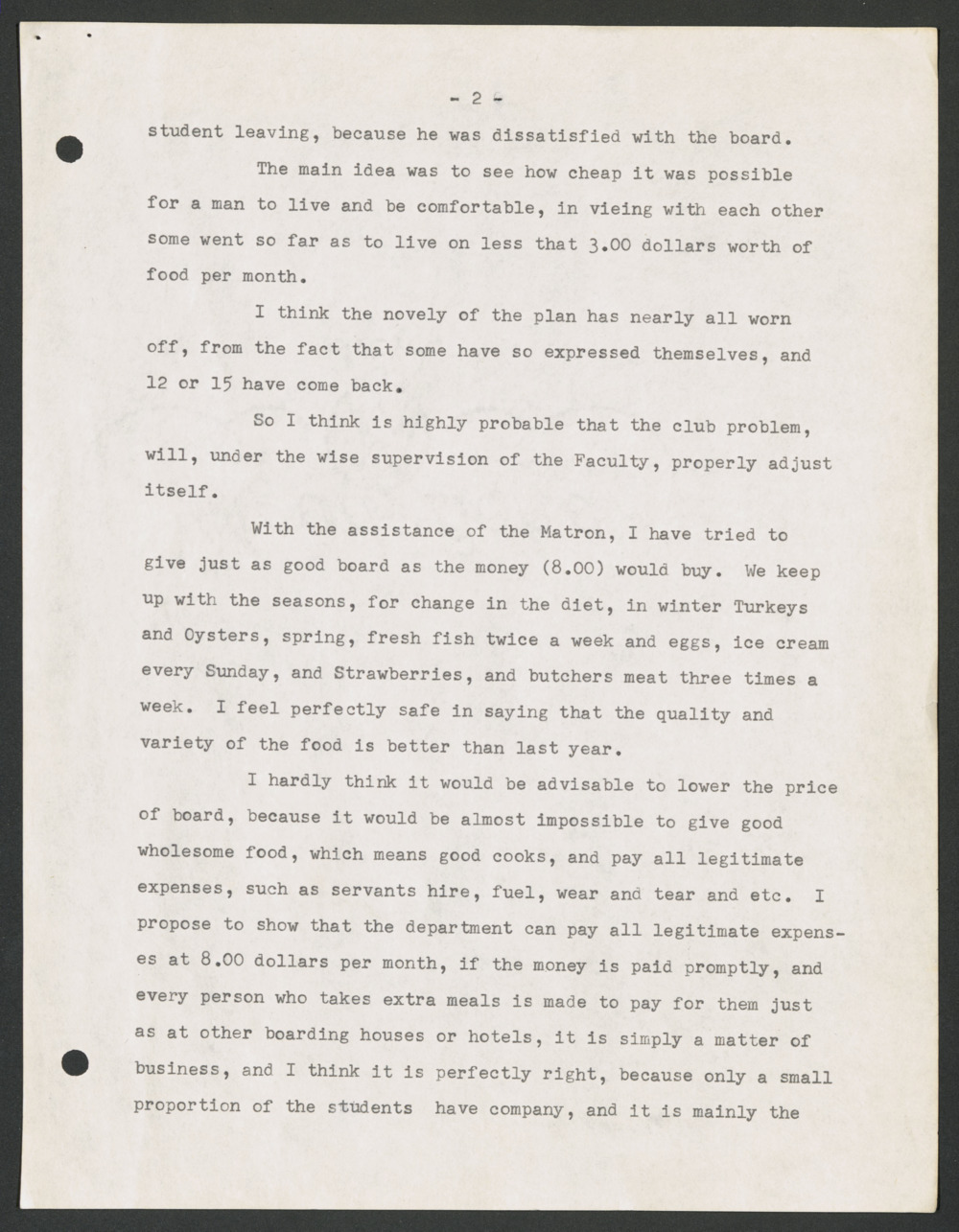
Collection Highlight: In a letter addressed to Holladay dated June 1895, B.S. Skinner, the purchasing agent in charge of room and board, writes, “During the Fall term, we had as many as 150 boarders… But at the beginning of the new year, quite a number of the students conceived the idea that they wanted to and could live in clubs in the neighborhood very much cheaper than at the college.” Skinner describes that some of the students lived on less than $3.00 a month for food. The University’s monthly board charge of $8.00 covered food that “[kept] up with the seasons, for change in the diet, in winter Turkeys and Oysters, spring, fresh fish twice a week and eggs, ice cream every Sunday, and Strawberries, and butchers meat three times a week.”
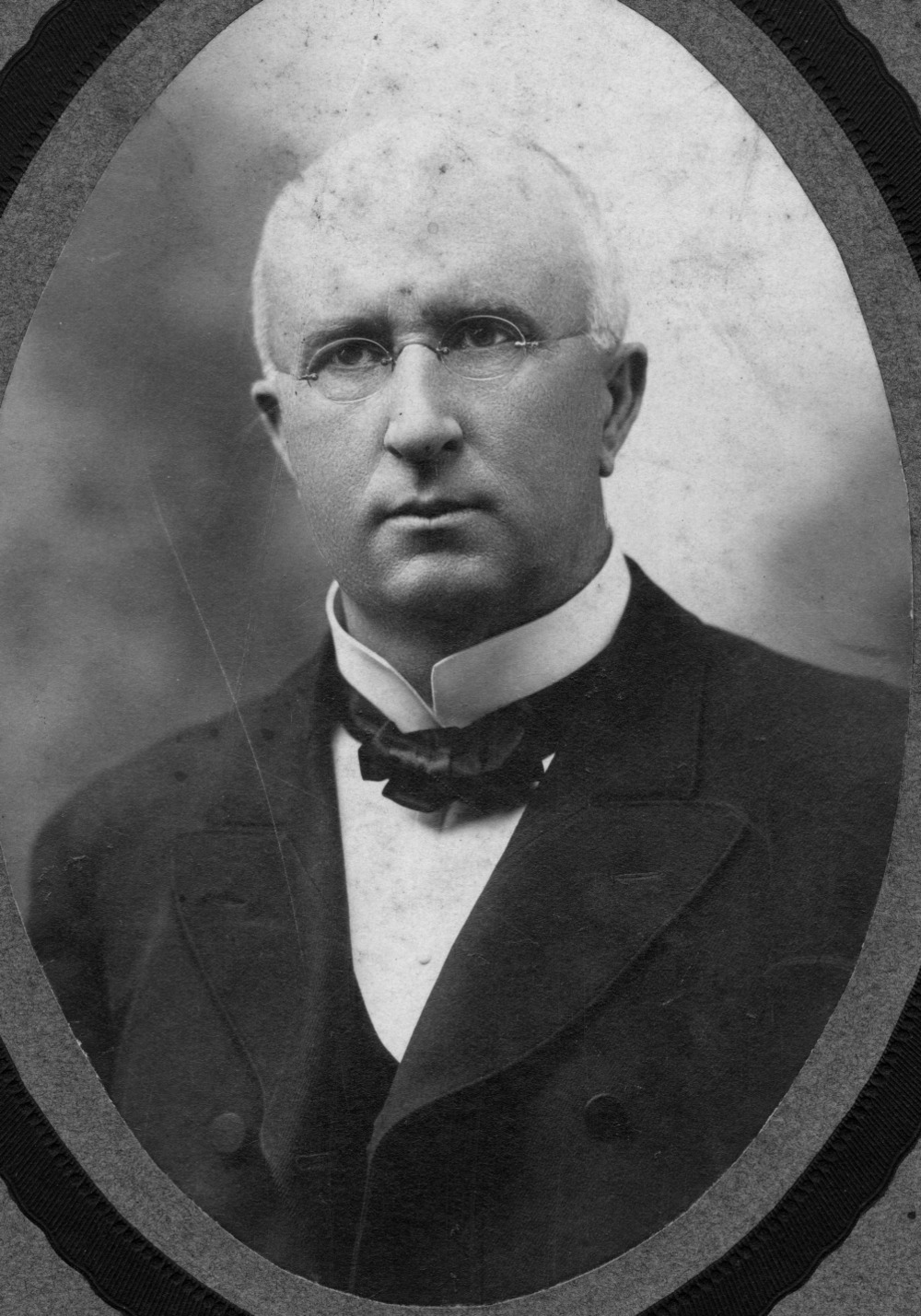
A native North Carolinian, George Tayloe Winston ranked top of his class at the United States Naval Academy and served as the second president of NC State. During his time in office, the college developed a textiles curriculum and began offering summer courses for public school teachers.
Collection Highlight: A booklet titled “The North Carolina College of Agriculture and Mechanic Arts”, circa 1900, explains the content and spirit of education at the college.
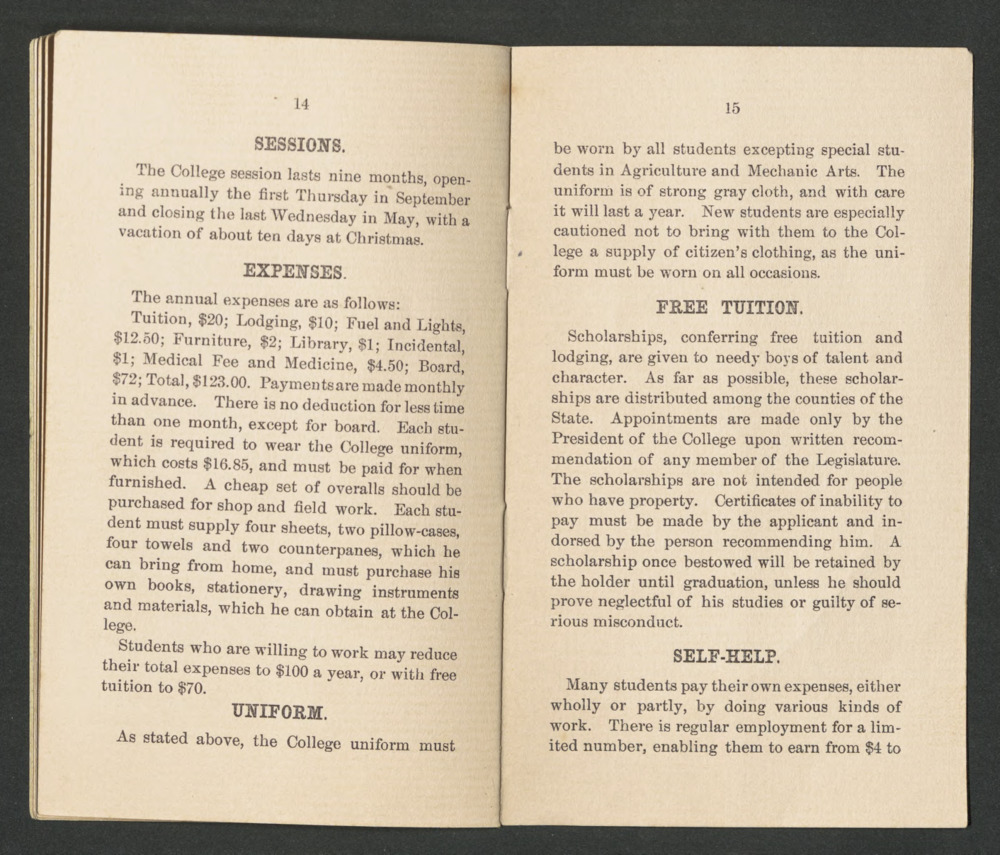
At the time, there were four four-year degree specializations in Agriculture, Engineering, Chemistry, and Textile Industry, as well as two-year and three-month programs for manual training and specialized courses. To be admitted to the four- and two-year programs, applicants had to take examinations on Arithmetic, Algebra, English, and American History, and have a certificate of “good moral character” from the last school they attended. Total annual expenses were $123, including tuition, lodging, fuel, furniture, medical fee, and board.
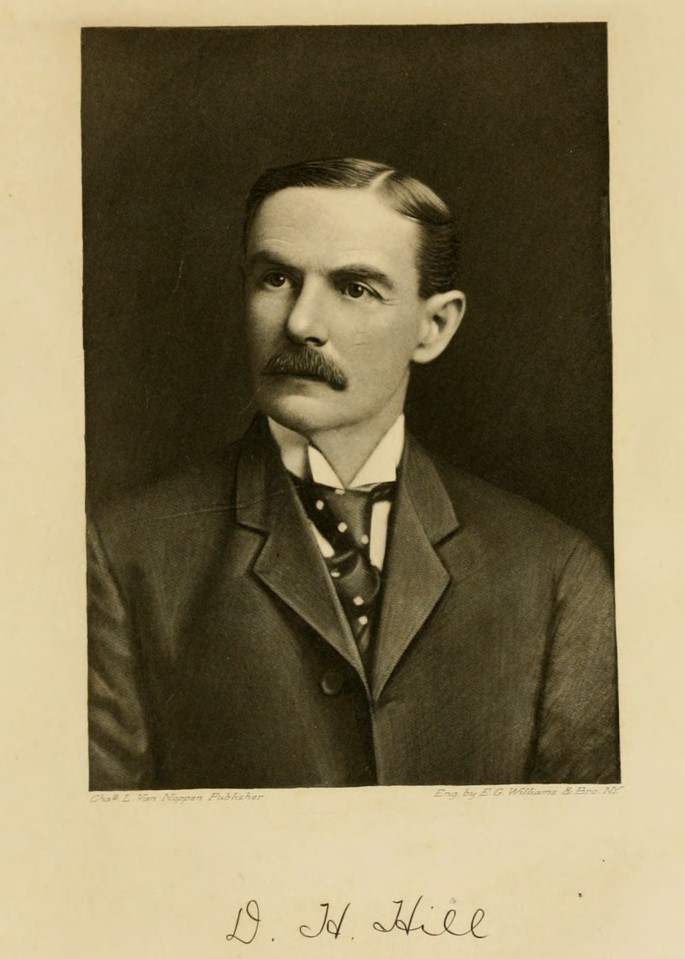
Daniel Harvey Hill Jr., the son of a Confederate general, was one of the six original faculty members at the college when it opened in 1889. He was a professor of English and served as librarian before he was selected as the third president of the college in 1908. He served until 1916, when he retired as president to write a history of North Carolina troops during the Civil War. Under his administration, college enrollment surpassed 700 students for the first time.
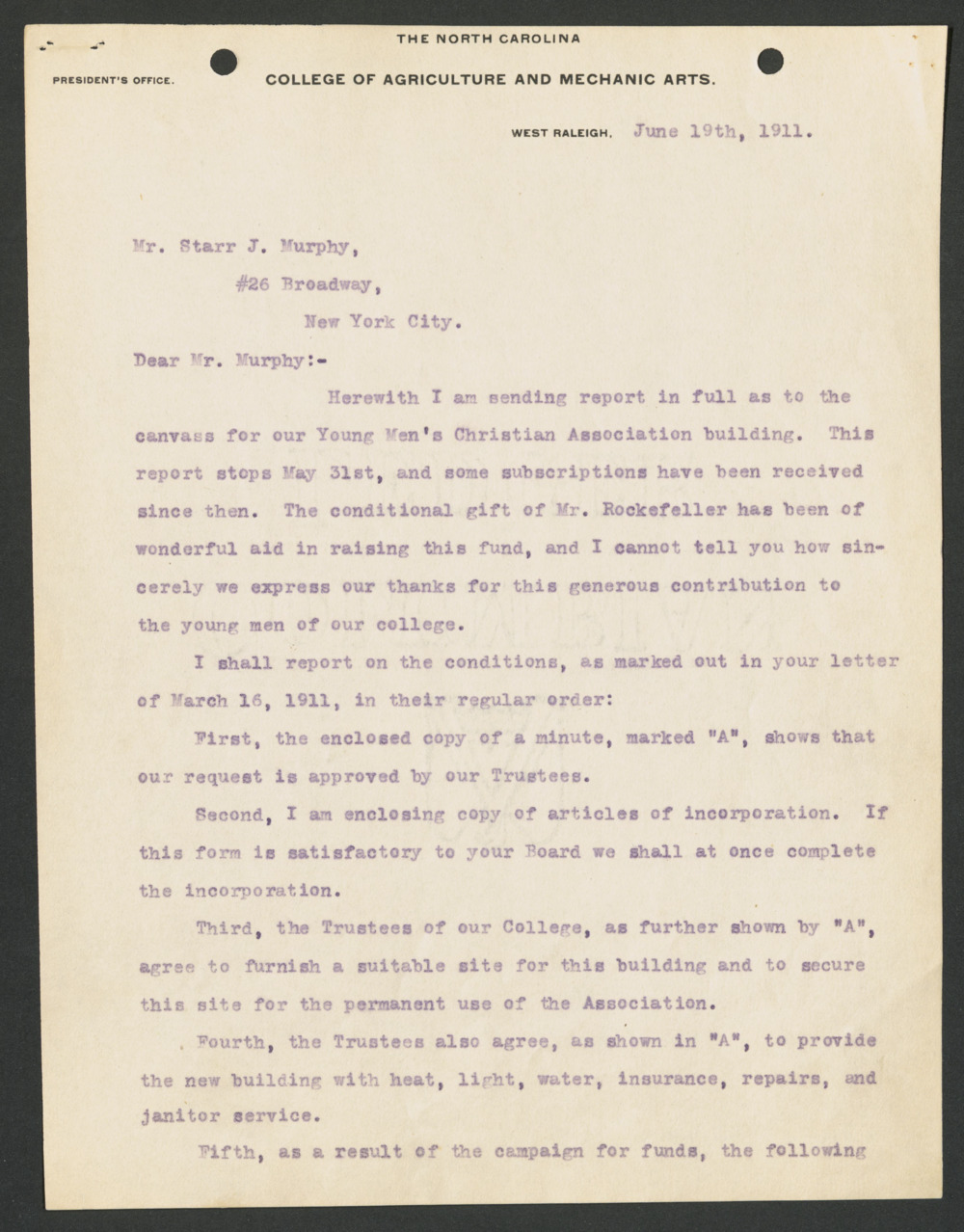
Collection Highlight: The collection includes letters regarding a $20,000 gift from John D. Rockefeller for the purpose of building a YMCA building. A letter from the Secretary of the Board of Trustees reads, “And be it further RESOLVED that the earnest thanks of the Board of Trustees be transmitted to Mr. Rockefeller for his sincere and effective interest in the welfare of the students of this college.”
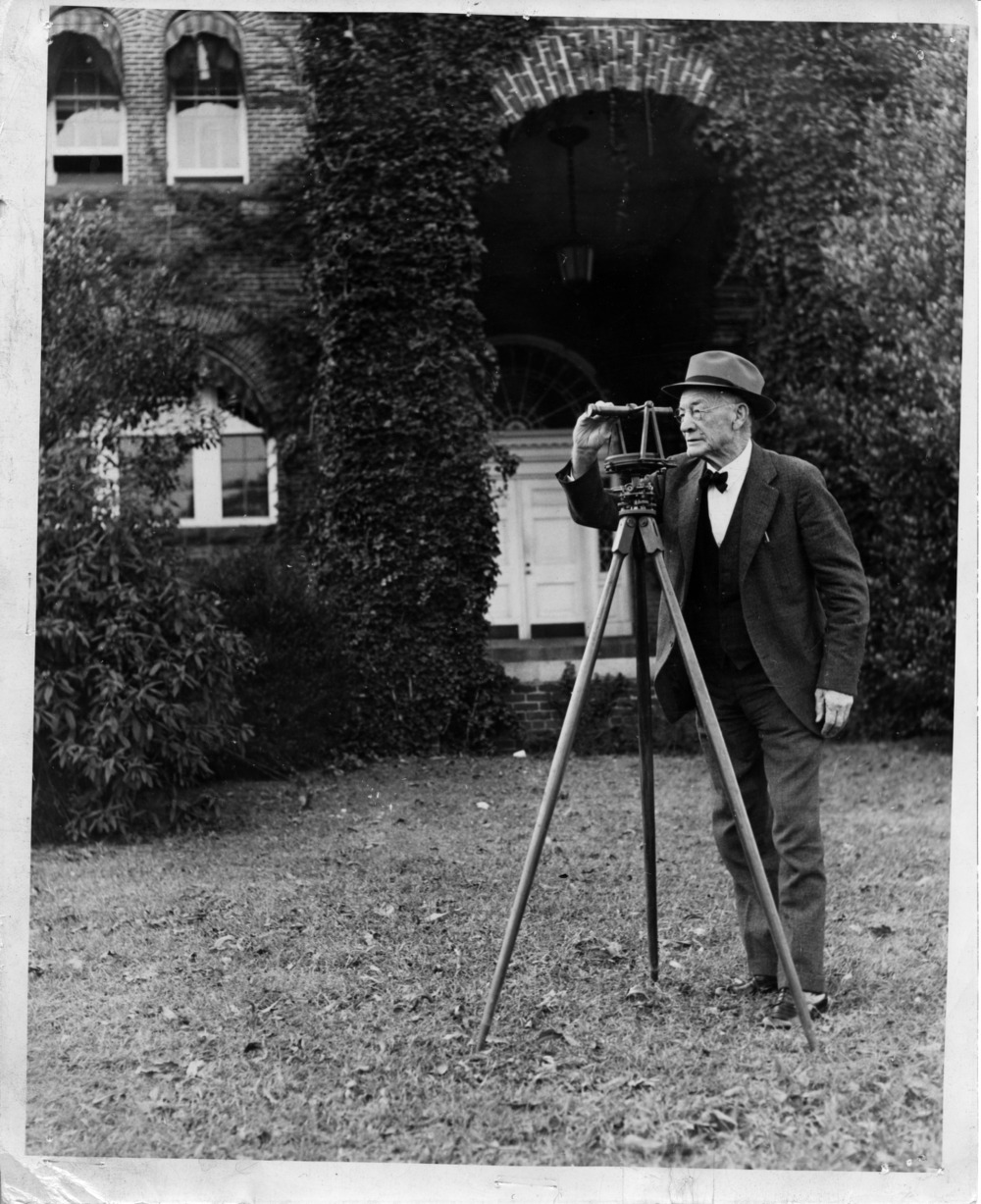
Wallace Carl Riddick started his career at the North Carolina College of Agriculture and Mechanic Arts in 1892 as a professor of mechanics and applied mathematics. Over the next 25 years, he served as the college’s first professor of civil engineering, then vice president of the college. He was the fourth president of the college from 1916 until 1923, when he resigned in order to become the first dean of the School of Engineering. During his tenure in 1917, the name of the college was changed to North Carolina State College of Agricultural and Engineering. He also reorganized the administration to accommodate increased numbers of students, faculty, and staff. Student enrollment reached 1000 in 1918, fell for the next few years, and then reached 1000 again in 1921.
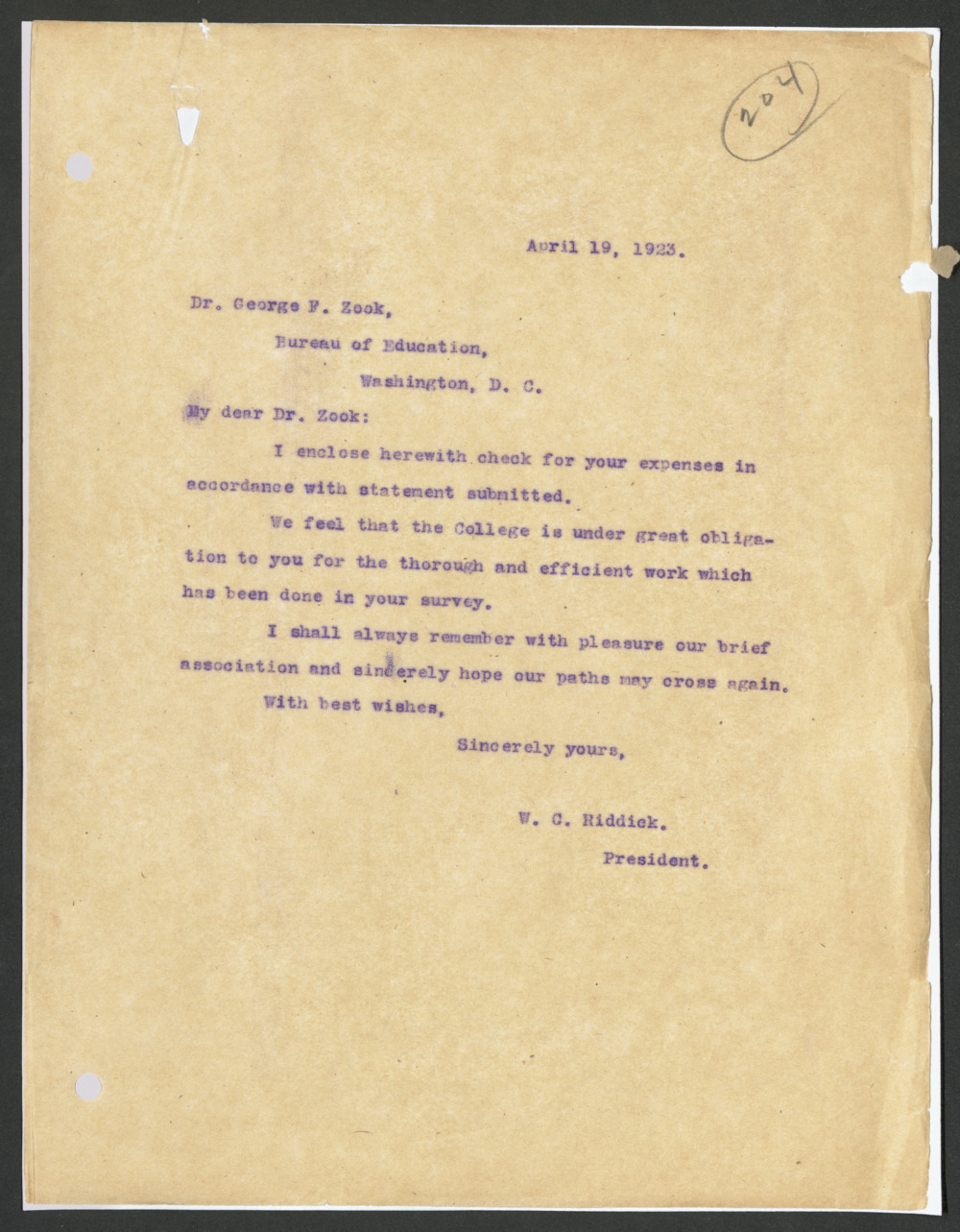
Collection Highlight: The digitized collection includes a 1923 report made by George F. Zook, a specialist in higher education, surveying the organization of the college at the request of Riddick. Zook critiqued the college’s organization structure but expressed optimism for its future, writing, “At the North Carolina State College there is every indication of the same unselfish spirit of service on the part of officials and faculty which should characterize the teaching profession everywhere. At the same time it is impossible to escape the feeling that, perhaps through no fault of the personnel at the college, the institution is not performing as extensive a service for the State as it should.”

With a long background in education, Eugene Clyde Brooks was state superintendent of public instruction in North Carolina before he became president of North Carolina State College. During his tenure, he oversaw the creation of Schools of Agriculture, Science and Business, Education, Textiles, and Engineering, as well as a Graduate School.
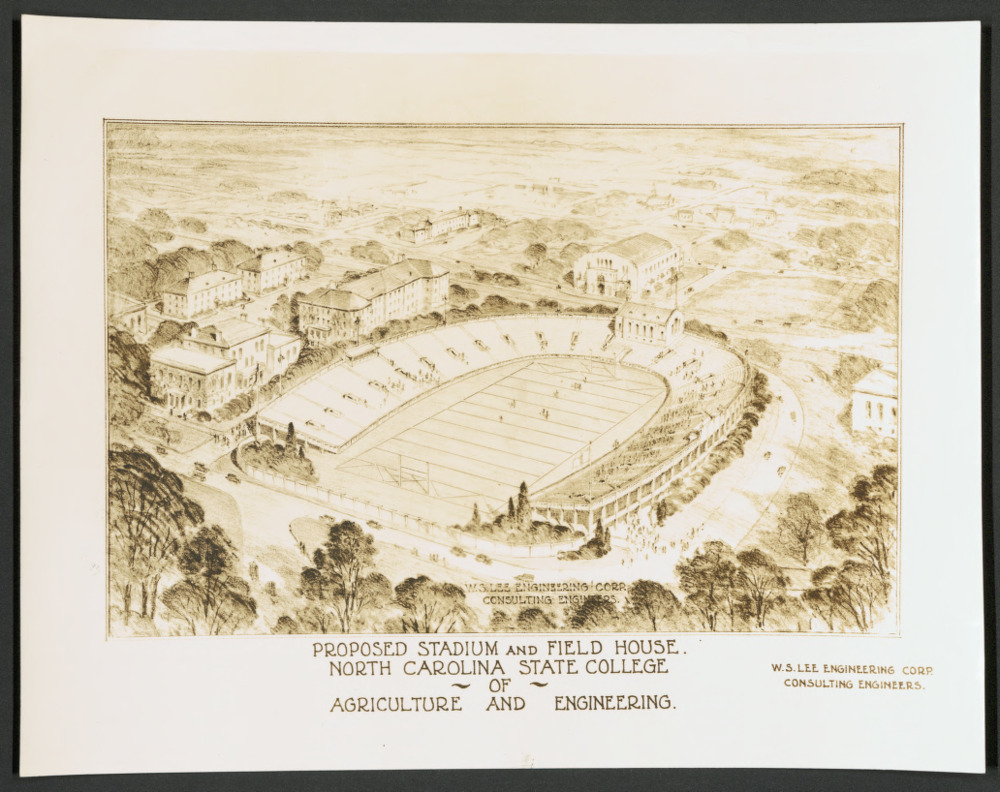
Collections highlight: The collection includes documents relating to securing funds from the state in order to build a new athletics stadium. A letter to President Brooks expresses frustration at the slowness of the approval process, reading, “The University of N.C. got $150,000 cash out of the Emergency Fund last year for the erection of an auditorium, but they seem very much concerned over the fact that State College proposes to use the credit of the State for $40,000 for a stadium.” (emphasis original)
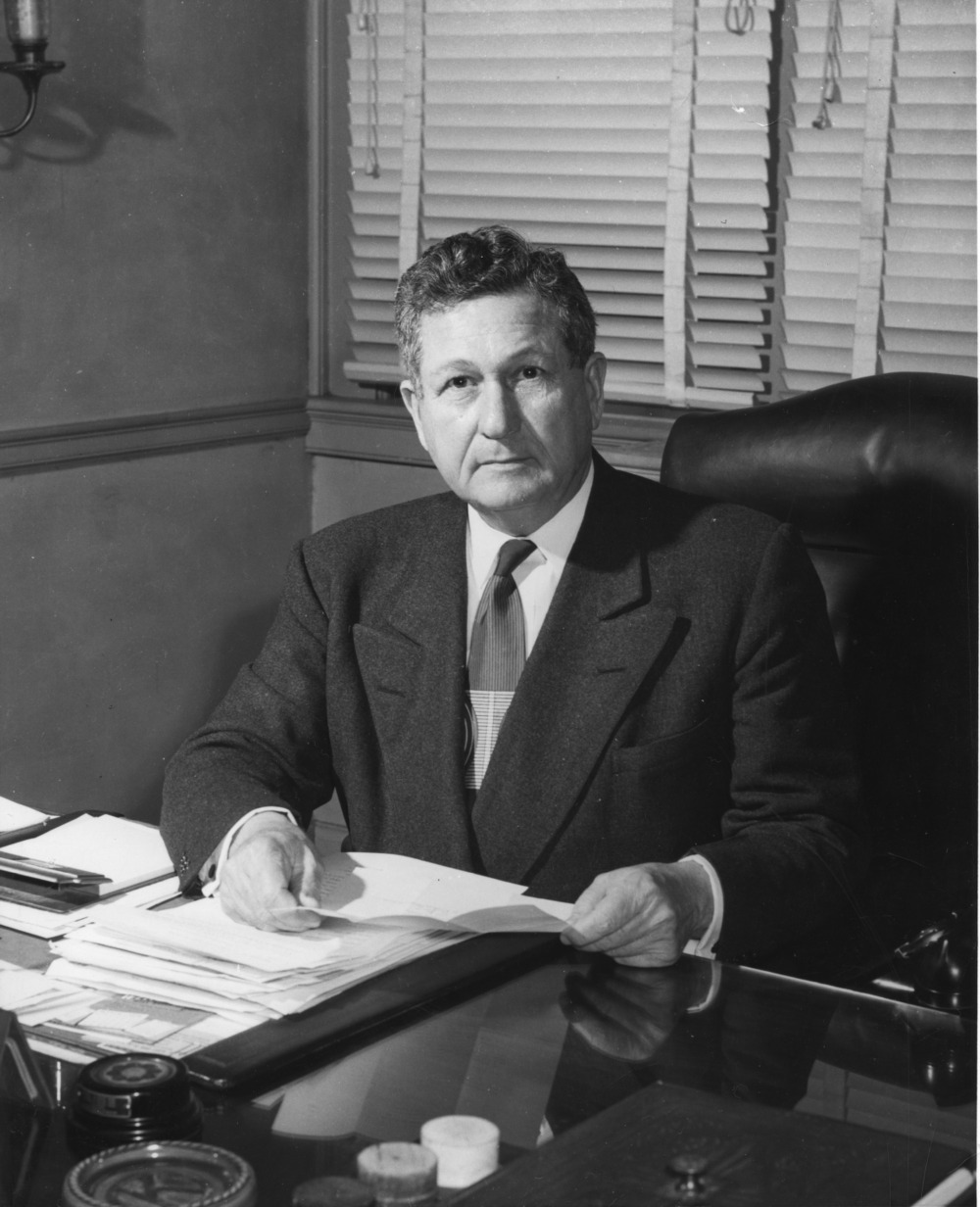
A graduate of the North Carolina College of Agriculture and Mechanical Arts, John William Harrelson returned to the renamed North Carolina State College in 1934 to become the chief executive officer, a position no longer titled “president” but rather “dean of Administration.” His position gained its current title of chancellor in 1945, and he served until 1953. Harrelson led the university through a time of historic upheaval, dealing with the economic disruption of the Great Depression, the military mobilization of the student body during World War II, and an influx of veterans after the war.

Collection highlight: A letter, circa 1942, from Frank P. Graham, President of the Consolidated University of North Carolina, details the wartime duties of State College, the University at Chapel Hill, and the Women’s College (now UNC-Greensboro). He writes: “The war must be won at all costs! The costs will be great. We must make many sacrifices and many adjustments. There will be no ‘business as usual’... no work ‘as usual’... no care-free life ‘as usual’... no University ‘as usual’.”
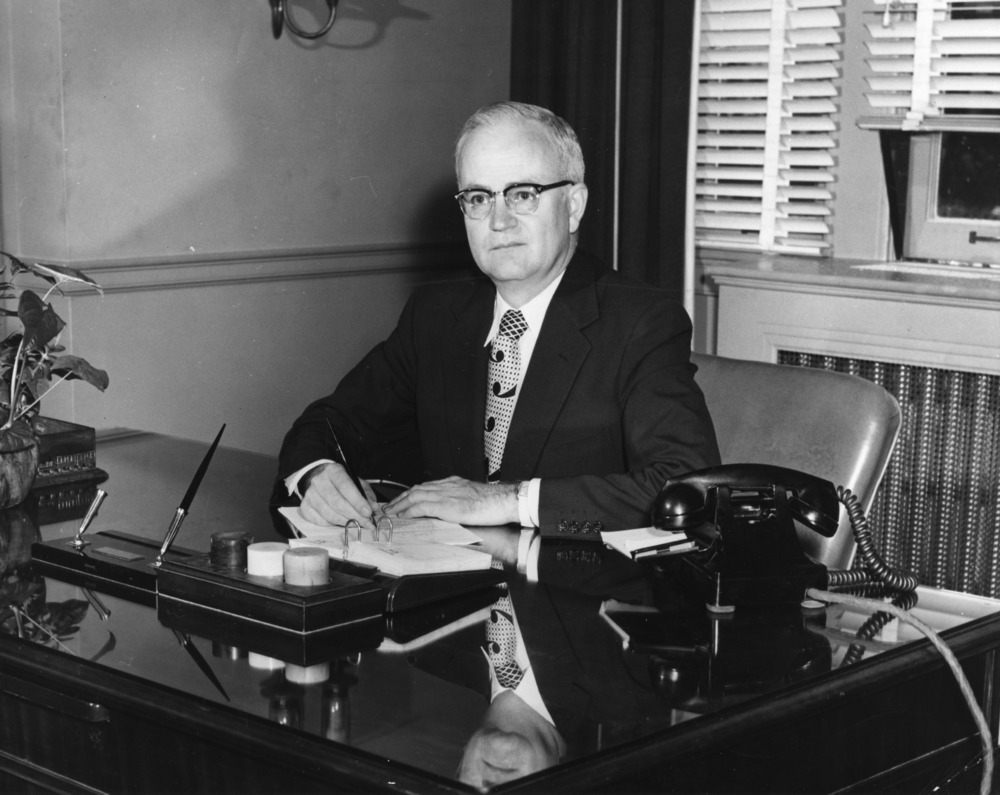
Carey Hoyt Bostian joined the zoology faculty of what is now NC State University in 1930. After acting in several positions in the School of Agriculture, he served as chancellor from 1953 to 1959, after which he returned to teaching. During his tenure, the college underwent a multi-million dollar expansion and enrollment exceeded 5,000 students. He oversaw the enrollment of the first four African-American undergraduates at NC State in 1956 after the federal courts had mandated the desegregation of education. For more information on Bostian’s views of integration, visit Brick Layers: An Atlas of New Perspectives on NC State’s Campus History.
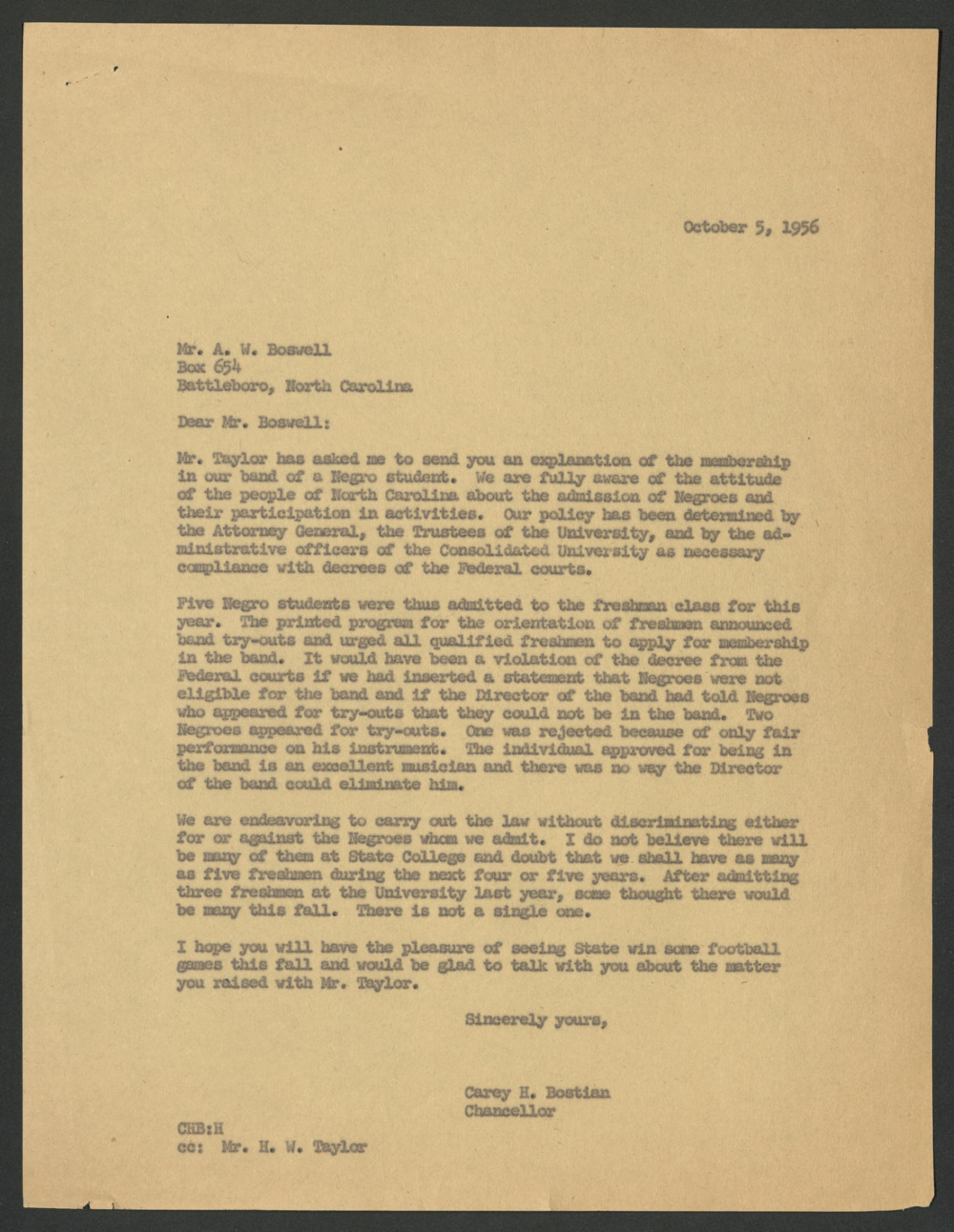
Collection highlight: A letter from Bostian to a Battleboro resident who opposed the inclusion of a Black undergraduate student in the NC State band. Bostian defends the equal treatment of Black students according to federal court orders. However, Bostian also writes, “I do not believe there will be many [Black undergraduates] at State College and doubt that we will have as many as five freshmen during the next four or five years.”
For more information about NC State University's past Chancellors, check out our Chancellors and Presidents timeline. Additional collections pertaining to the early Chancellors mentioned in this post include the Alexander Quarles Holladay Papers, the Daniel Harvey Hill Jr. (1859 - 1924) Papers , the Wallace Carl Riddick Papers, the John William Harrelson Papers, and the Carey Hoyt Bostian Papers. More detailed biographical information and a discussion of the legacies of Bostian, Brooks, Hill, Harrelson, and Holladay can be found at Brick Layers: An Atlas of New Perspectives on NC State’s Campus History.
If you have any questions or are interested in viewing Special Collections materials, please contact us at library_specialcollections@ncsu.edu or submit a request online. The Special Collections Research Center is open by appointment only. Appointments are available Monday–Friday, 9am–6pm and Saturday, 1pm–5pm. Requests for a Saturday appointment must be received no later than Tuesday of the same week. Special Collections will be closed from Dec. 22nd through Jan. 6th for winter break and reopen for appointments the week of Jan. 8th.